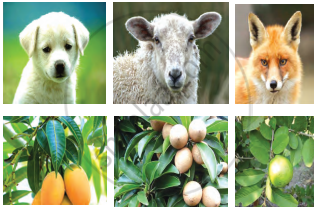Advertisements
Advertisements
प्रश्न
Find an odd one out.
विकल्प
Position of eyes
structure of bones of hand
structure of nostrils
structure of ear pinna
उत्तर
structure of bones of hand
APPEARS IN
संबंधित प्रश्न
Mammals : _________ : : Amphibia : Fishes
Give two examples of vestigial organs in human beings and plants.
Differentiate between homology and analogy. Give one example of each.
(a) Select the homologous structures from the combinations given below:
(i) Forelimbs of whales and bats
(ii) Tuber of potato and sweet potato
(iii) Eyes of octopus and mammals
(iv) Thorns of Bougainvillea and tendrils of Cucurbita
(b) State the kind of evolution they represent.
(a) Select the analogous structures from the combination given below:
(i) Forelimbs of whales and bats
(ii) Eyes of octopus and mammals
(iii) Tuber of sweet potato and potato
(iv) Tuber of Bougainvillea and tendrils of Cucurbita
(b) State the kind of evolution they represent
Study the following statements:-
I. Wings of birds and wings of bats are homologous organs.
II. Wings of birds and wings of insects are modified forelimbs.
III. Wings of birds and wings of insects are analogous organs.
IV. Wings of birds and forelimbs of horse are homologous organs.
The correct statements are
(A) I and II
(B) II and III
(C) III and IV
(D) I and IV
Write the similarity between the wing of a butterfly and the wing of a bat. What do you infer from the above with reference to evolution?
Differentiate between analogy and homology giving one example each of plant and animal respectively.
Which one of the following pairs of vegetables is an example of homologous structures?
(A) Potato and sweet potato
(B) Carrot and radish
(C) Carrot and tomato
(D) Tomato and radish
Find out from newspapers and popular science articles any new fossil discoveries or controversies about evolution.
Explain with an example for the given, how the following provides evidence in favor of evolution in organisms :
Fossils
Human tailbone is a vestigial organ. Explain.
Select and write analogous structures from the list given below :
1) Wings of butterfly and birds
2) Vertebrate hearts
3) Tendrils of Bougainvillea and Cucurbita
4) Tubers of sweet potato and potato
You have potato, carrot, radish, sweet potato, tomato and ginger bought from the market in your jute bag. Identify two vegetables to represent the correct homologous structures.
(A) Potato and tomato
(B) Carrot and tomato
(C) Potato and sweet potato
(D) Carrot and radish
Write short notes based upon the information known to you.
Embryology
Write the names of those animals in whom the human body organs are functioning.
Explain with suitable examples importance of anatomical evidence in evolution.
With the help of diagrams, describe emasculation and bagging.
The most common types of fossils are ------------------------.
Explain the importance of Anatomical evidences with examples.
Find an odd one out.
Name the parts shown in the diagram.
Human jaw

What is carbon dating?
Observe the given images and answer the following questions.

- Which evolutionary evidence does it indicate?
- What does it prove?
- State another example of evolutionary evidence.
Select the correct statement.
Select the CORRECT match.
Tendons and ligaments are examples of ______.
Organs having similar functions but different origin and development are known as:
Animal husbandry and plant breeding programmes are the examples of ______.
What are we referring to? When we say 'simple organisms' or 'complex organisms'.
Give an example for convergent evolution and identify the features towards which they are converging.
Explain divergent evolution in detail. What is the driving force behind it?
You have studied the story of Pepper moths in England. Had the industries been removed, what impact could it have on the moth population? Discuss.
Complete the following diagram:

Explain natural selection with the example of industrial melanism.
Define the term:
Homologous organs
